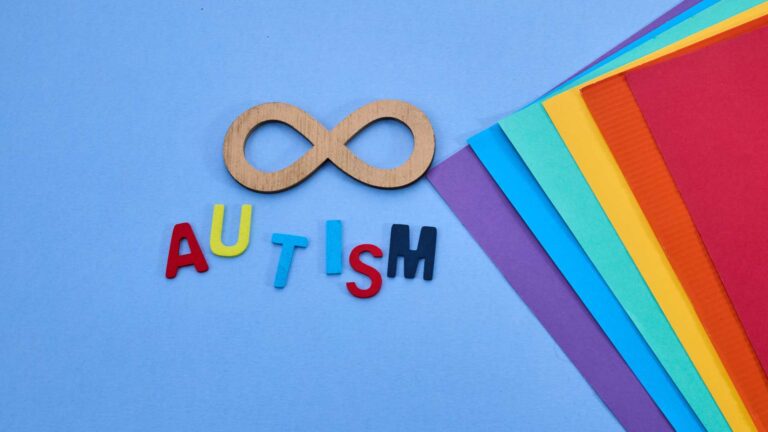Autism and play: Few facts more inarguable than “kids love to play.” Playing is an essential aspect of a child’s development. Playtime is natural and spontaneous, bringing children joy while contributing significantly to their cognitive, emotional, physical, and social growth.
For children with autism spectrum disorder (ASD), play holds an even higher significance. Challenges in communication, sensory issues, social interactions, and repetitive behaviors characterize autism. Many behavioral difficulties kids with autism face translate to playing differently from “neurotypical” kids, struggling with communicating during interactions or telling stories with their toys. This incorrect belief can lead some to think kids on the spectrum don’t look forward to or benefit from playing.
Play is a powerful tool for kids with autism, enabling them to develop essential skills, overcome challenges, and reach their unique potential. By embracing the therapeutic value of play, we can create supportive and inclusive environments where all children can participate.
At ABA Centers of Tennessee, we specialize in Applied Behavior Analysis (ABA) therapy, a widely used intervention for children with autism that recognizes the significance of play and incorporates it into therapy regimens to teach new skills.
Engaging children with autism in play-based activities can facilitate their overall development and help them acquire essential social skills. This article celebrates playtime and explains why autism and play go hand in hand.
The Benefits of Play
Play is foundational for the development of various skills in children. It fosters cognitive growth by enhancing problem-solving abilities, creativity, and imagination. When kids participate in imaginative play, such as engaging in make-believe shows or pretending to be characters, they develop crucial cognitive skills, including symbolic representation, abstract thinking, and general planning.
Play is a self-motivated and enjoyable activity characterized by creativity and flexibility that children join for exploration, learning, and fun. Play can take various forms, including physical, constructive, imaginative, and social. Each type of play contributes to different parts of a child’s development.
Play also has a significant role in emotional and social development. Through play, children learn to interact with others, take turns, share, negotiate, and develop empathy. They practice social skills, such as understanding facial expressions, emotional cues, and body language. Play enables children to express themselves while developing emotional regulation and coping mechanisms for challenging situations.
Furthermore, play improves physical development by focusing on fine and gross motor skills, coordination, and body awareness. Running, climbing, and jumping helps children develop their balance, muscles, and coordination. Solving puzzles or building with blocks enhances hand-eye coordination and fine motor skills.
Play & Developmental Milestones
Play establishes developmental milestones in children. Babies engage in exploratory play during infancy, investigating objects, sounds, and textures. This form of play helps them develop spatial awareness and sensory integration skills.
Children engage in pretend symbolic play as they grow. This type of play involves substituting an object’s purpose and creating imaginary scenarios. This crucial milestone indicates the development of abstract thinking, language skills, social understanding, and problem-solving.
Autism & Play
Neurodivergent children are unique and exhibit distinct characteristics in play behavior. These arise due to the sensory processing, communication, and social challenges they experience. Understanding these particularities can show how kids with ASD benefit from play.
Solo Play
Neurodivergent children often play by themselves, something that is known as solitary play. They may prefer stereotyped or repetitive behaviors, focusing intensely on activities and specific objects. This type of play can involve repetitive movements, lining up toys, or spinning wheels rather than pushing a car.
Self-directed play behaviors serve many purposes for children with autism, like creating a predictable environment with no unwanted sensory interference. Kids with ASD also develop intense interests in topics, activities, or objects. Their solitary play may revolve around these focused interests, allowing them to explore and deepen their knowledge of the subject.
Kids with ASD sometimes struggle to interpret social cues like facial expressions, body language, or other nonverbal communication. Their preferences can place them outside a group as they don’t always get the most out of playing directly with other kids.
Symbolic Play
Symbolic play, also known as pretend or imaginative play, is an important developmental milestone that allows children to use actions and objects to represent something else. It requires creating and acting out imaginary scenarios, engaging in make-believe, and using objects symbolically and creatively. This development usually happens in kids around 2 to 3 years old and continues throughout childhood.
However, children with autism spectrum disorder (ASD) often face challenges in engaging in symbolic play. They struggle with playing pretend, telling stories, or imaginative thinking in general. They may need help with grasping the abstract nature of objects, for example, understanding that a cinderblock can be a chair or a stick can be a sword.
Play & ABA Therapy
In ABA therapy, play is often used as a naturalistic teaching approach, where therapists incorporate play-based activities to target specific goals. Therapists create a play environment that encourages learning by utilizing the child’s interests and motivations. They may use games, toys, and imagined scenarios to teach problem-solving, social skills, and language development.
ABA therapists employ shaping strategies, prompting, and reinforcement to guide children through play-based activities. By breaking down complex skills into manageable steps, therapists can gradually teach new skills to neurodivergent kids. For example, if the goal is to teach turn-taking, therapists may use a game where the child takes turns with a peer or the therapist. A child can learn concepts and generalize them to other contexts through positive reinforcement, receiving a reward for each healthy behavior.
ABA therapy is the gold standard therapy for children with autism. It focuses on teaching and reinforcing healthy responses while reducing challenging behaviors. Play is an integral part of an ABA regime to engage children and teach them meaningful new skills.
Encouraging Play
Below are some simple techniques for parents that ABA therapists use to encourage play:
- Facilitate Shared Interests: It’s a commonsense principle: Kids like playing with kids who hold similar interests. You can engage and motivate your child in interactive play by determining which peer has an overlapping interest.
- Structured Play Activities: Introduce structured play activities with clear rules and expectations. This technique can help children with autism understand the play context and develop appropriate social skills, such as sharing, taking turns, and following instructions.
- Peer Modeling & Support: Lead the way during play. If you act as a mentor and model during play sessions, your child will better understand how to navigate social interactions.
- Visual Supports: Visual prompts, visible schedules, or social stories can assist children with autism in understanding the sequence of play activities, expected behaviors, and social rules.
ABA Centers of Tennessee Knows Autism & Play
At ABA Centers of Tennessee, we offer top-of-the-line ABA therapy for anyone with autism seeking growth. Our board-certified experts individualize our care to ensure every child capitalizes on their strengths and shores up their weaknesses. Play therapy is central in ABA for teaching children with autism new abilities and safeguarding success, independence, and joy.
Call (844) 423-9483 or reach out on our website for a FREE consultation.






